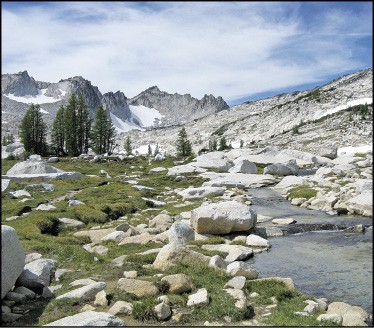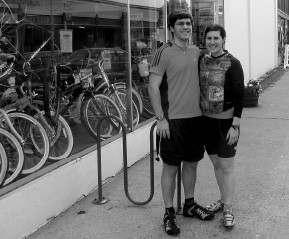The first noticeable difference on an English hike is that you take a train to the trailhead — and the train goes through a place called Wivelsfield.
The next is that the train ticket runs about $30 each for a ride of just over an hour. But with gas around $11 a gallon, city traffic nightmarish, and coffee and pastries for sale on the train, it all starts to make sense.
Hiking in England definitely makes sense. Why fight the hordes at London tourist attractions when you can read the paper on a train and in two hours be strolling through green, rolling hills past Roman ruins and medieval churches? Such was the proposal my host Liz, a Virginian now living in London, made to me when I came home one evening complaining of London’s noise and concrete.
We consulted a dizzying array of “rural ways” on a website, settling on the easy 5.5-mile Barcombe Walk, described as going “across fields and along quiet country lanes, following the river Ouse to Barcombe Mills, visiting the three villages of Barcombe.”
After grabbing some sandwiches near the station in Lewes (pronounced like Lewis), a 9th-century Saxon town along the Ouse (“ooze”) River, we took a cab to Barcombe (“bark-em”) Cross. The final bit of charm came from our cabbie who cheerily announced, “Right, off we go to Barcombe, then!” He spent most of the ride wondering aloud why anyone would live in the hellhole of London when they could be out here in the country.
We had printed a route map and description from the website, and right away I knew it wasn’t going to be like a standard hike in the U.S. First, it listed refreshments along the way, and second, the opening line was “Starting from the Post Office in Barcombe Cross High Street, turn right, and head towards the roundabout.” We passed the old gatekeeper’s house, the garden an explosion of color, then followed a path along someone’s field to a pond virtually ringed with “private fishing” signs.
From there, the route led us over footbridges, along fields, through thickets, and over several types of stiles, one of which is a spring-loaded self-closing thing called a “kissing gate.” Another big difference from U.S. hiking is that we were often, and quite obviously, walking through private property. One can only imagine an American farmer being asked to give up a swatch of cropland to a trail, then to let strangers walk it. But there’s a funny reversal on thoughts related to land here: Everybody puts fences, gates, and walls around their yard, but public rights-of-way routinely cut through crops. “Cross the drive to follow the waymarked path, bearing left after the first field and continue along the edge of the next field, keeping the hedgerow on your left.” Ah yes, hedgerows, those quintessential symbols of the English countryside. At times they are 10 feet high and, along the roads, barely a car-width away from each other. When we hiked in May, they also were adorned with wild roses and Queen Anne’s Lace.
After, I don’t know, a few fields, several stiles, and a couple of roads, we came to the hamlet of Barcombe Mills, where the Ouse and several tributaries (including Andrew’s Stream) were harnessed in centuries gone by to run mills. Much of the old works are still around, including weirs and dams and chutes, but the last mill burned down in the ’30s, the train station closed in the ’60s, and the pub in the ’90s. Barcombe Mills is what you’d call sleepy today with lovely stretches of path along the river, ducks and geese on the water, and a bridge occupying a spot where one was mentioned as existing in 1066. An old toll sign goes back to pre-decimal days: “waggon and horses 1.6, motor and side-cars 3-0.”
We could have wandered down a side path to the Anchor Inn, a lakeside pub that rents canoes, but we wanted to keep moving; the route map promised a thatched roof in the next village. We found it next to the Church of St. Mary, with walls dating to the 11th century and a tower from the 13th. Just down the road was an old estate with a sculpted hedge nearly 25 feet high and across the way was a house with a pond and gardens, the whole of which was so charming that I thought my heart would explode upon looking at it.
All this loveliness was still bouncing in our heads as we wound behind houses, along lanes, and back into the village of Barcombe Cross, where our map said the trail ended “along the High Street, next to the Royal Oak.” I thought that might be a historic tree, but in fact it’s a pub, where our hike ended with bags of potato chips, a ginger ale for me, a stout for Liz, and a call for the same cabbie to run us back to the station.
Whatever English hiking lacks in wilderness, it makes up for in common sense and charm.
Headed that way? Visit ruralways.org.uk to pick a hike and nationalrail.co.uk to find a train. Airfare to London is around $1,000.
 Tom Eggers
Tom Eggers 